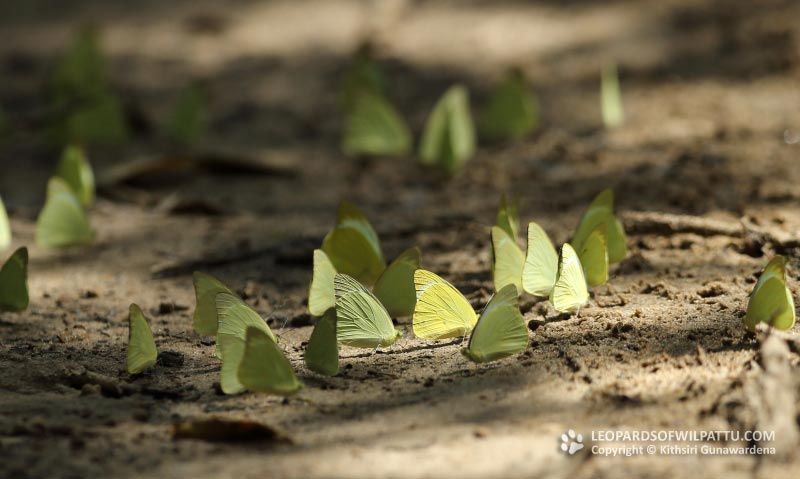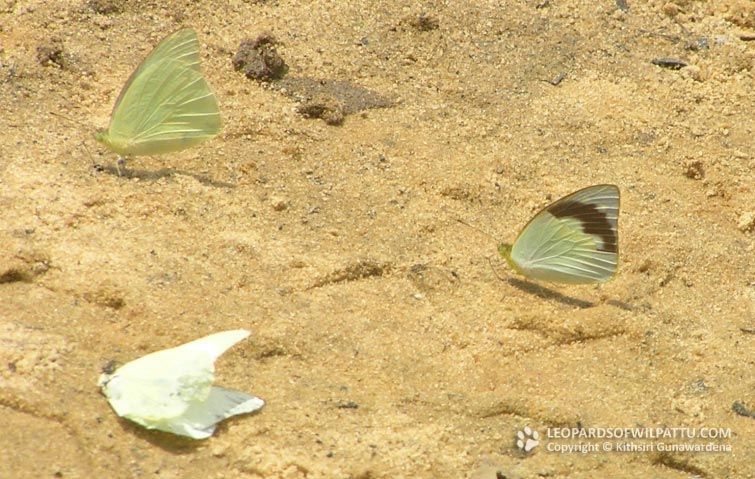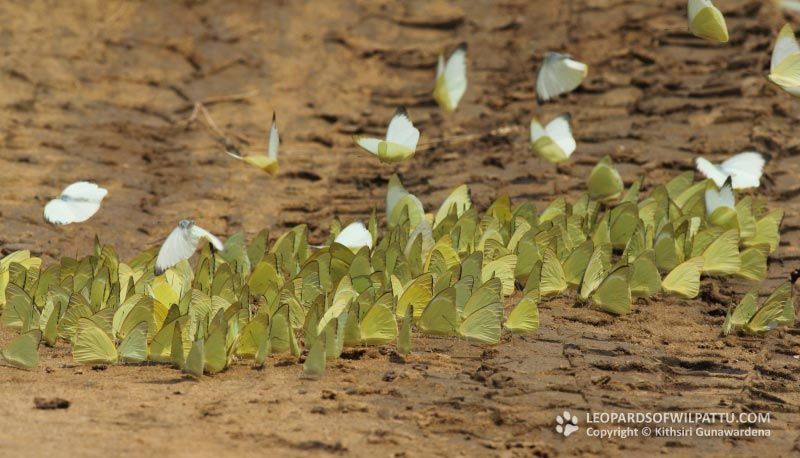
Butterflies ‹‹ Go Back
This species is endemic to Sri Lanka. The conservation status of this species is regarded as Least Concerned (National Red List 2012) and it is protected under the Fauna and Flora Protection Ordinance as amended by Act No. 22 of 2009.
Even though this species is found throughout the country in all zones except for the highest hills it is more commonly seen in the dry zone. It is one of the commonest butterflies in the country that can be seen in large numbers settled on the edges of puddles on the road close to pools of water in most dry zone national parks. They take part in continuous flights across great distances along with other species of butterflies, which is generally referred to as butterfly migration. I have seen this species from the Mannar Island in the north to Yala National Park in the south.
In Wilpattu these are the white butterflies that you see in large numbers settled close to pools of water or at damp places after the rains from November to about March. They are usually in the company of other species such as the Lemon Migrant and the Striped Albatross. This species can be very easily differentiated from similar species by the concave fore wing margin, which gives its upper wing a shape of the dorsal fin of a shark.
The female of this species lays its eggs on leaves of Weera Drypetes sepiaria
trees, which are found in abundance at Wilpattu.
During the months where swarms of these butterflies can be seen at Wilpattu they become almost the principle source of food for the three Bee-eater species that is found in the park. I reproduce below a note that I wrote to describe the behavior of this species and one of its primary predators the Little Green Bee-eater.
During the butterfly season when large numbers of Lesser Albatrosses can often be observed on the damp ground or close to pools of water, these birds enjoy a time of plenty. They would perch on a chosen branch and would periodically dart at the butterflies settled on the ground. As the bird approaches, the insects instinctively fly up. The bird then has a split second in which to pick on one individual and pursue it. About one in three attempts of these acrobatic flights ends up in a capture with an audible snap of its beak. Upon a successful hunt, the bird would return to its favourite perch with the luckless insect in its beak and batter it to death prior to swallowing its body. The battering results in the wings of the butterflies to drop off. After a few minutes of fast flight the butterflies would settle down again on the same location prompting another attack. Even though sometimes dead butterflies can be observed on the ground where they gather, bee-eaters have not been observed picking up any such dead butterfly .



